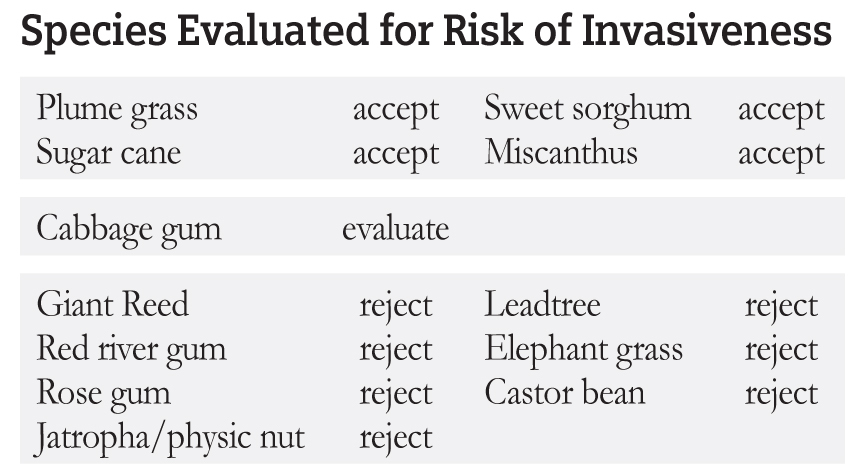Halting Harmful Invaders

SOURCE: STUDY ASSESSING INVASIVE PLANT POTENTIAL PUBLISHED IN BIOMASS & BIOENERGY
November 15, 2011
BY Holly Jessen
Good biofuel feedstocks are highly productive, have low input requirements and are widely adaptable. Unfortunately, those same traits are also common with invasive species.
Language addressing invasive species is included in the Biomass Crop Assistance Program. The proposed farm bill, the Rural Economic Farm and Ranch Sustainability and Hunger Act introduced in mid-October, would widen the number of eligible plant species by striking the phrase “noxious or has the potential to become invasive or noxious” from the definition. If passed into law, only invasive plants would be excluded from BCAP, not plants with the potential to become invasive or noxious.
Advertisement
On the other side of the coin, there is concern from some that efforts to replace fossil fuels with biofuels from alternative feedstocks not create one environmental problem in place of another. In other words, if a biofuel feedstock becomes a harmful invader, it could undo the good of producing alternative fuel from that feedstock.
In order to evaluate the invasive potential of 12 biofuel species proposed for Florida and the U.S., researchers from the University of Florida’s Nature Conservancy used the Australian Weed Risk Assessment system. Their research identified four plant species—all grasses—that have a low risk of invasiveness. “Overall, the results of this study are consistent with those reported elsewhere: some bioenergy crops pose greater risk of invasion than do others,” the study says. “A precautionary approach that involves weed risk assessment is being suggested by both U.S. and international organizations.”
Advertisement
Damage and control efforts for invasive plants cost the U.S. an estimated $34 billion every year. On the other hand, only about 0.1 to 1 percent of introduced species actually become invasive and it should be possible to identify bioenergy corps that won’t have harmful effects on new habitats. Potential biofuel crops should be assessed across a variety of geographies, as species have been known to grow for decades without becoming invasive only to rapidly become a serious problem when moved into a new habitat. “Florida incurs substantial ecological and economic impacts from invasive species every year,” Doria Gordon, one of the study’s four authors, tells EPM. “Our climate and abundant water means that many plants can become established here. So it’s critical that we not purposely introduce known or high probability invaders over the acreage that biofuels will be planted.”
Although plume grass, sugarcane, sweet sorghum and miscanthus were identified as acceptable species, the study did point out that miscanthus and sweet sorghum are derived from species that are documented invaders that have had environmental impacts in North America and Europe. “The result that these taxa (plant groups) have a low probability of being invasive assumes that they will not exhibit the invasive traits of the related species and relies on limited data for the hybrid,” the study says. “As a result, cultivation of these taxa should be accompanied by long-term monitoring for changes in fertility and other traits.”
—Holly Jessen
Upcoming Events





